Different Tattoo Styles, Explained: Your Full Guide
Different Tattoo Styles, Explained: Your Full Guide
It’s easy to get overwhelmed by the endless tattoo ideas and inspiration available at your fingertips. While finding the right artist is essential to guide you through the tattooing process, determining your preferred tattoo style and placement requires your independent input. To help you get started, we’ve put together a comprehensive guide on all of the most popular different tattoo styles to choose from. Remember: this tattoo style guide is a broad overview of different tattoo styles. Learning these terms will greatly benefit you during the tattoo inspiration stage of your journey. This guiding tool will provide you with the best phrases to use when searching for photo ideas or speaking with your tattoo artist to help you provide the detailed information required to bring your ideal tattoo design to life. Spend some time doing your own image research to find what designs, shapes, colours and combinations speak to you.
Expert Tip: Zensa Numbing Cream contains 5% lidocaine for maximum-strength pain reduction during your tattooing session. Many artists don’t like most tattoo-numbing creams because they include vasoconstrictors, which temporarily alter your skin texture, disrupt ink settling and can ultimately distort the final look of your piece. However, Zensa Numbing Cream does not contain any vasoconstrictors to provide a more pleasant tattooing experience without worrying whether some temporary relief will ruin the ink’s vibrancy or look of the final piece. Our unique vegan, cruelty-free formula won’t affect ink settling and contains vitamin E for anti-inflammatory benefits that begin to support the healing process even before you leave the studio chair.
Read on for a comprehensive guide to the different tattoo styles you should know to discover the piece to be inked permanently into your skin.
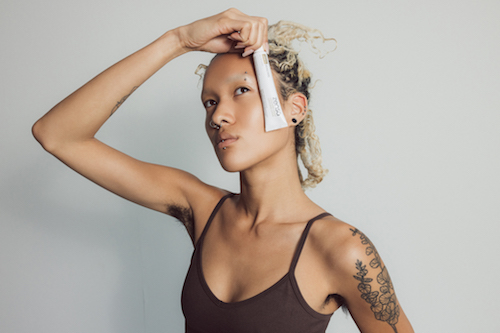
Traditional Style (or American Traditional Tattoo Style)
Traditional style tattoos will remind you of the first images that come to mind when you picture the quintessential tattoo. This popular tattoo style was pioneered by Norman Collins (aka Sailor Jerry) in the 1940s as a symbol of post-WWII counterculture. Traditional style tattoos are inked with bold, saturated hues and look like drawings with an almost cartoonish quality. Some defining characteristics of Traditional style tattoos are their 2-dimensional look, brightly-coloured tattoo ink with a bold black outline and minimal to no shading. Traditional style tattoos often involve high saturation with colour generously filled under the skin. These qualities of Traditional style tattoos make them a great choice for any skin tone and help them age well (minimal fading compared to some contemporary tattoo styles).
Common motifs include anchors, skulls, swallows, mermaids, sails, roses, hearts, eagles, panthers and snakes. This popular tattoo style is also referred to as Old School style tattoos, American Traditional tattoo style, Classic tattoo style and Western Traditional tattoo style.
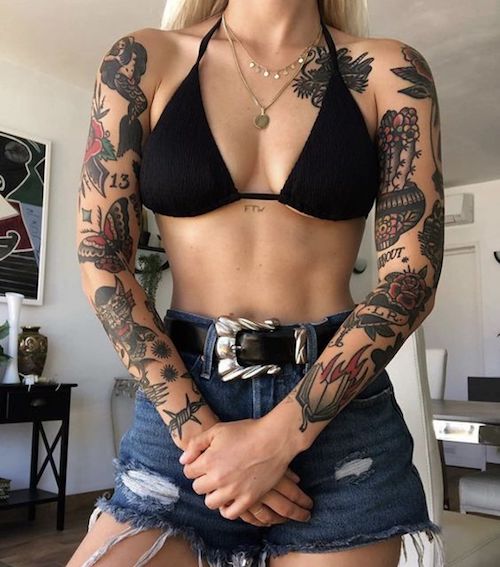
Credit: Eve Shaw/Pinterest
Neo-Traditional Tattoo Style
As the name implies, the Neo-Traditional style is the next-gen counterpart to Traditional style tattoos. While these different tattoo styles have similar defining characteristics (prominent linework and vibrant ink colour palettes), Neo-Traditional tattoos look more painterly and include a broader range of common motifs. Neo-Traditional tattoos have distinct illustrative qualities to them that are heavily influenced by Art Nouveau and Art Deco styles. They commonly depict nature-inspired motifs, such as animals, flowers, vines and abstract portraiture.
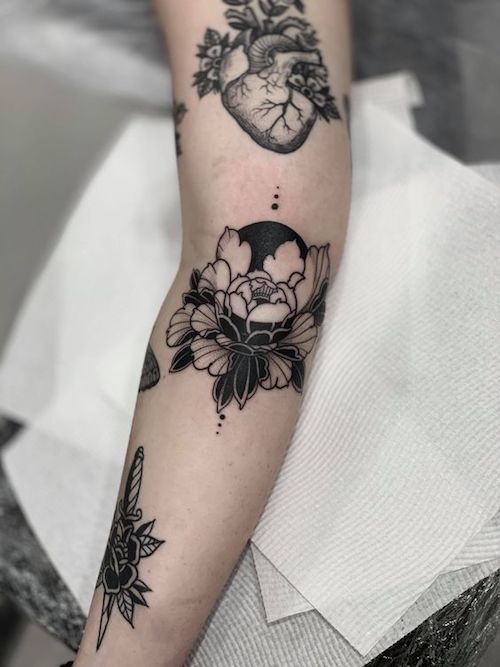
Credit: Celebrity Ink/Pinterest
New School Tattoo Style
Originating in the 1970s, the New School tattoo style is known for its distinctive vivid colours, rounded silhouettes and cartoonish features or subjects through the design. New School tattoo style combines and can be seen as an evolution of Traditional and Neo-Traditional tattoo styles. All three tattoo styles share similar distinctive qualities, such as using bold, black linework to create definition between large-scale shapes or designs throughout the piece. Like Traditional and Neo-Traditional tattoo styles, New School tattoos take inspiration from American popular culture. Some common motifs include references to television shows, Disney movies, video games, anime, comic books, graffiti and hip-hop culture. New School tattoo style takes some inspiration from iconic Americana motifs and cartoonish references. However, New School tattoo designs display these symbols in an ironic way when compared to Traditional and Neo-Traditional tattoo styles.
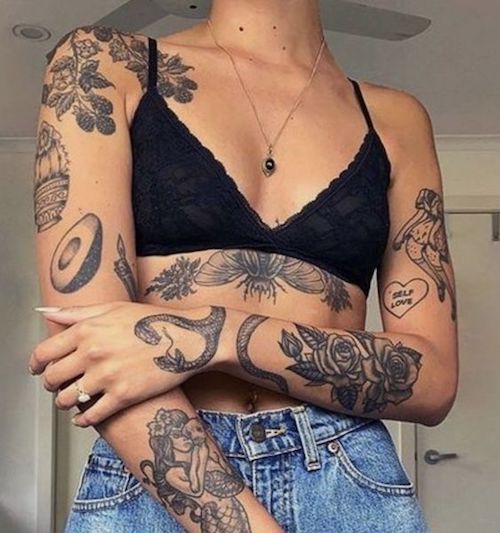
Credit: Laisa Mendes/Pinterest
Japanese Tattoo Style
Otherwise known as Irezumi, Japanese style tattoos originated during the country’s Edo period (1603-1868) and are inspired by wooden block prints depicting prominent signifiers of Japanese culture. Japanese tattoo style is known for vivid colors, illustrative linework and its distinctive use of negative space. Common motifs in Japanese style tattoos include symbols of Japanese folklore, famed samurai, Buddhist deities, dragons, tigers, snakes, koi fish, kitsune, phoenixes and foo dogs. These cultural images can be inked as standalone images or accompanied by natural elements like water and flowers.
Japanese tattoos are typically larger pieces and are commonly done on the back, as a sleeve, on the inner elbow, across the chest or down the leg. Full-body Japanese tattoos are not uncommon. However, Japanese style tattoos can be done as small tattoos or on other parts of the body, too.
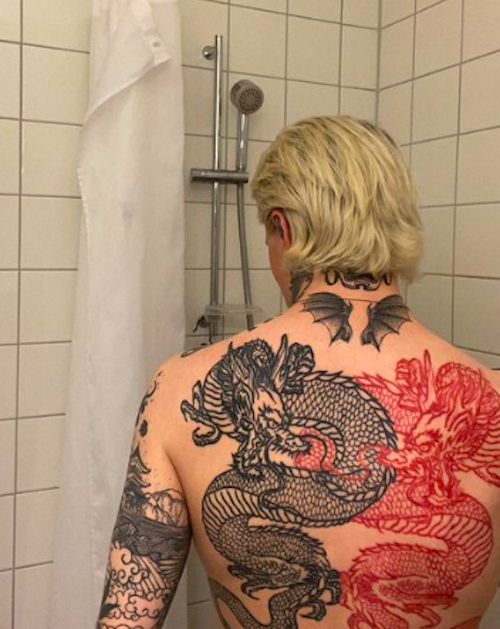
Credit: @alexanderimmonen/Instagram
Tribal Tattoo Style
Tribal tattoo style is an umbrella term for various indigenous tattoo styles that all feature elaborate patterns and are almost always done in black ink. Most Tribal tattoos are a type of blackwork style tattoos, which are known for their bold linework and thoughtful use of negative space (more on this popular tattoo style below). Common motifs used differ among the various aboriginal groups whose unique tattoo styles fall under this catch-all term. Typically, Tribal tattoos favor nature-inspired symbols, including different animals, water, plants, the sun or moon. Be mindful of any cultural significance that these tattoo symbols or placements hold in a specific group. Whether you’re drawn to qualities of Polynesian, Samoan, or Māori Tribal tattoos, research which tattoos hold a deeper meaning. Use their general style and inkwork as a source of inspiration, not a means of cultural appropriation.
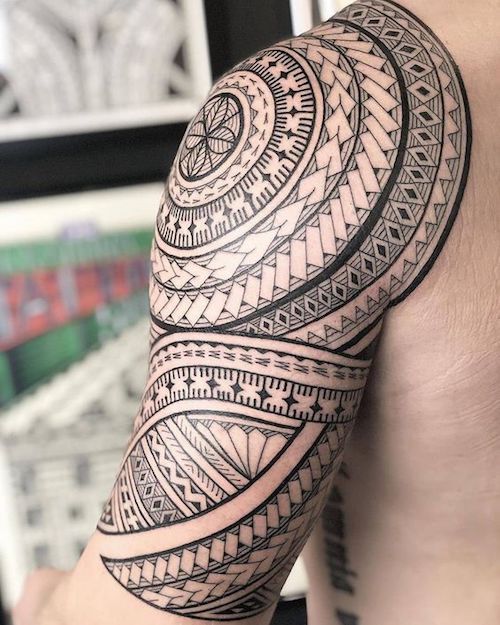
Credit: Outsons/Pinterest
Blackwork Tattoo Style
As the name suggests, the Blackwork tattoo style is used to categorize any tattoo done with exclusively black ink. Most Blackwork tattoos feature bold, thick linework and strategic use of negative space. Any tattoo made from solely black-pigmented ink with no shading, grey or coloured ink falls into the blackwork category. The Blackwork tattoo style naturally invites a lot of creativity and experimentation. While Tribal tattoos have long been one of the most popular subcategories, the Blackwork tattoo style extends to nearly any tattoo genre– from Illustrative and Geometric tattoo styles to abstract graphics, portraiture and lettering.

Credit: TattMag/Pinterest
Watercolour Tattoo Style
These tattoos offer a bright spot in a sea of dark and bold linework, a recurring theme amongst most popular tattoo styles. Watercolour tattoos involve a combination of bright, vivid pigments used to create subtle washes of colour on the skin. The colours fade out to look like a watercolour painting. Creating a well-done Watercolour tattoo requires a considerable amount of technical skill, so do your research or ask for photos of a prospective artist’s Watercolour tattoo work before booking your appointment. However, there are some pros and cons to consider if you love the look of a Watercolour tattoo over a more richly-hued tattoo. Watercolour tattoos are often less painful to get than most other tattoo styles because the pigment does not go as deeply into the skin. However, because they provide a lighter wash of colour, a Watercolour tattoo is likely to fade considerably faster compared to a dark, shaded or Blackwork tattoo.

Credit: TattMag/Pinterest
Minimalist Tattoo Style
Characterized by fine linework and delicate details, Minimalist tattoo style focuses on simple, clean designs with minimal to no shading, heavy use of negative space and a limited colour palette. Minimalist tattoos feature the basic elements of any given design and are done almost exclusively in black ink. Some Minimalist tattoos also incorporate white ink with limited coloured details. Minimalist tattoos are done with small needles, use relatively little ink and only take around 15-30 minutes to complete (unless it’s a larger piece). These factors make Minimalist tattoos less painful to get and offer a more discreet look compared to more traditional tattoo styles. However, because of their lower ink concentration, Minimalist tattoos are likely to fade more quickly than tattoo styles featuring bolder linework. While Minimalist tattoo inspiration is endless, some common design themes and ideas include floral tattoos, Geometric, sun and moon, anchor and zodiac tattoos.
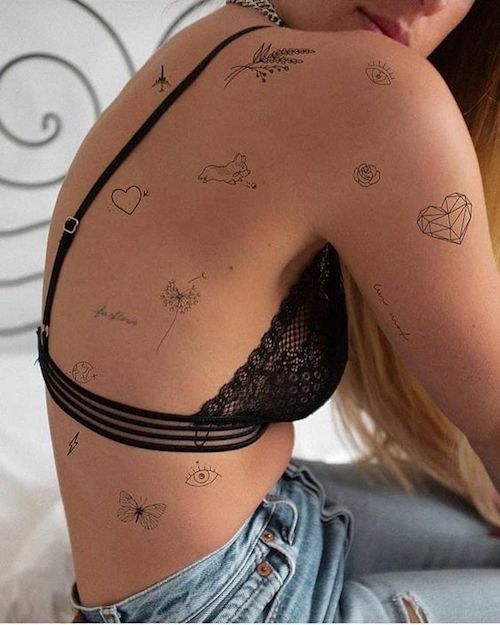
Credit: Pinterest
Geometric Tattoo Style
Praised for their precision, the Geometric tattoo style refers to tattoo designs that feature a series of geometric shapes (e.g. rectangles, triangles, circles, squares, diamonds, lines, etc.) in visually-pleasing combinations and patterns. Geometric tattoos can contain either bold or fine linework and tend to incorporate no to minimal shading. Historically, Geometric tattoo styles were inked to represent a religious or other sacred meaning. While these designs may still hold a spiritual meaning for some individuals, modern Geometric tattoos provide a balancing and harmonious sensibility. The Geometric tattoo style includes pieces that exclusively consist of various shapes, patterns and combinations as well as other designs that are reimagined using geometric elements (e.g. a lion tattoo with a half-diamond-embossed face). Geometric tattoos overlap with other tattoo styles (Minimalist to Blackwork and Watercolour), adding a proportional, polished and contemporary elegance to any conventional tattoo design.
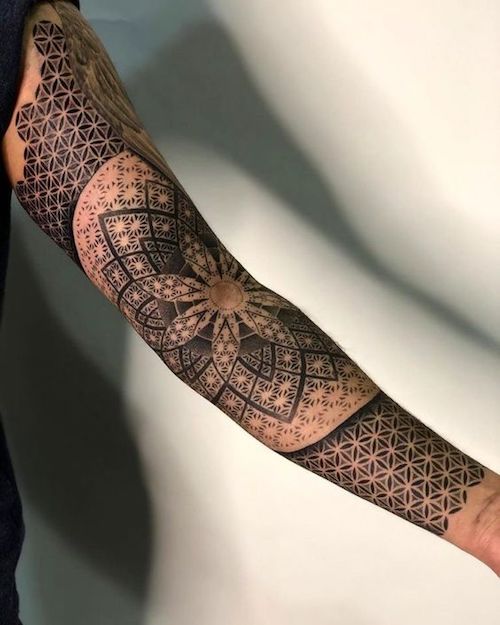
Credit: Outsons/Pinterest
Stick-and-Poke Tattoo Style
Also called Hand-Poked tattoos, Stick-and-Poke tattoos are done by hand with the same needle and ink used for a machine-created tattoo. Stick-and-Poke tattoos offer a more delicate, personalized look and tend to hurt less with a shorter healing time when compared to a tattoo done mechanically. While Stick-and-Poke tattoos can be done at home, it is highly recommended to have Hand-Poked tattoos done by a professional at a tattoo studio. Getting an expertly-done tattoo will ensure your piece is done with maximum precision and will save you a lot of trouble during the healing process. Stick-and-Poke tattoos can involve Minimalist linework, Dotwork or shading. They incorporate an endless variety of design motifs, from floral tattoos to hearts, sun and moon or zodiac tattoos and every theme in between.
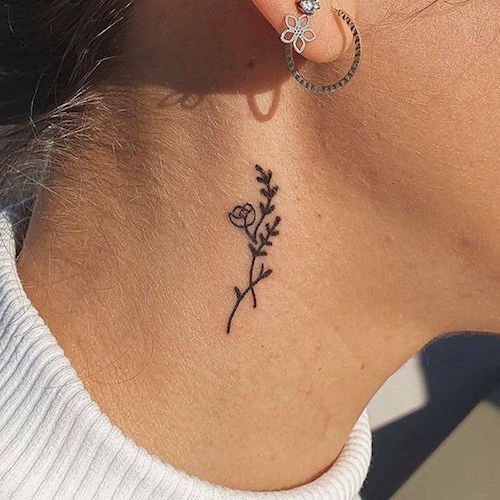
Credit: Stick and Poke Tattoo/Pinterest
Trash Polka Tattoo Style
Created by Simone Plaff and Volko Merschky in the 1990s, the Trash Polka tattoo style combines elements of surrealism, realism and geometric, lettering or graphic tattooing. Trash Polka tattoos are done almost exclusively in black and red ink. Most Trash Polka pieces are larger in size with a combination of bold and fine lines of black ink, grey shading and bold splash of red-coloured ink. Common motifs within the Trash Polka tattoo genre include realistic animal, floral, movie characters and nautical-inspired designs paired with abstract shapes, dynamic linework and ink splatters.
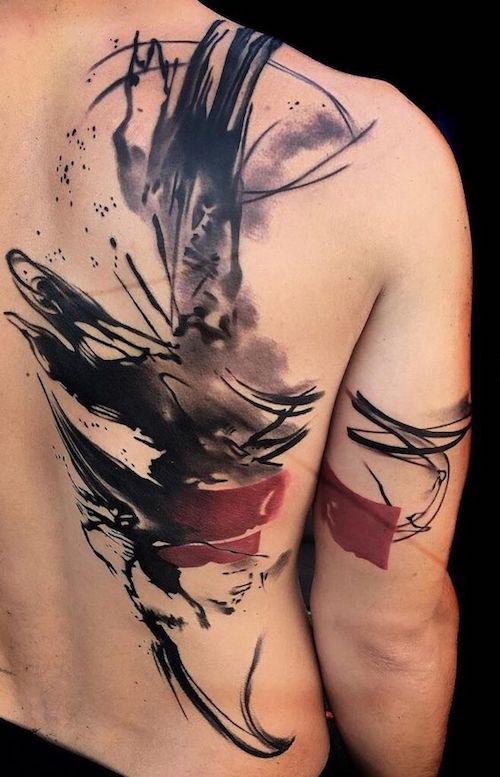
Credit: TattoosBoyGirl/Pinterest
Realism Tattoo Style
This tattoo style is as straightforward as it sounds. Realism tattoos mimic real-life images and are created using techniques to make them look the most photorealistic possible. The Realism tattoo has been a sought-after style since the 1950s and continues to be of the most popular tattoo styles today. These tattoos can be done in a wide variety of ink colours and often involve a lot of detail work or shading. Common design choices within the Realism tattoo realm include depictions of celebrities or loved ones, animals, a coveted object or place and nature-inspired motifs.
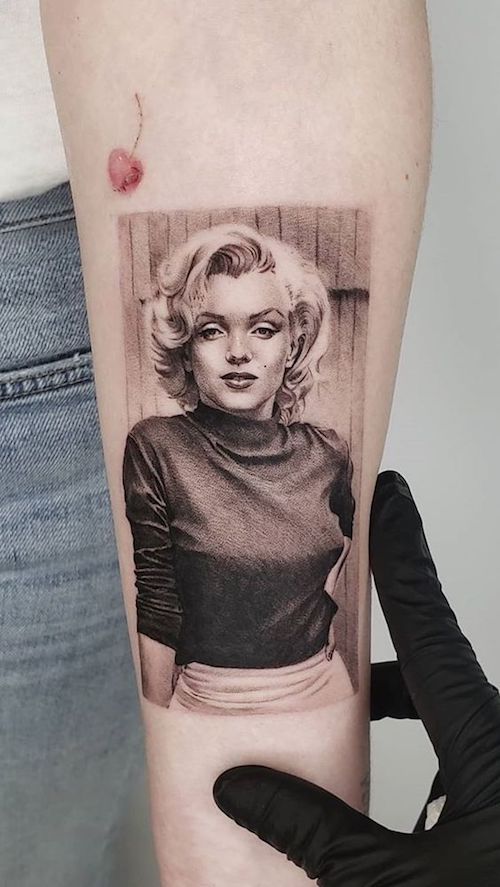
Credit: Kickass Things/Pinterest
Portrait Tattoo Style
Portraiture is a subcategory of the Realism tattoo style that focuses on creating images of faces and figures to make them appear as photorealistic as possible. Portrait tattoos can be done of human faces, like celebrities or loved ones or those of animals, such as your pet or a beloved image you’ve found through some sort of media. Attention to detail is essential for a well-crafted Portrait-style tattoo, so make sure to have a reference photo on hand for your consultation and tattoo session.
Illustrative Tattoo Style
Illustrative tattoo style is heavily influenced by Abstract and German Expressionism and combines traditional with Realism tattoo styles to offer a painterly element to any common tattoo design or motif. These tattoos often contain bold black linework to create a border or definition surrounding sections and the entirety of the piece. Illustrative tattoos can utilize black or coloured ink and be used in conjunction with Blackwork, Japanese, Geometric, Tribal or other tattoo styles. Unlike Realism style tattoos, Illustrative tattoos are supposed to provide an abstract feel and steer away from details that would make human, animal or other natural-inspired motifs appear photorealistic.
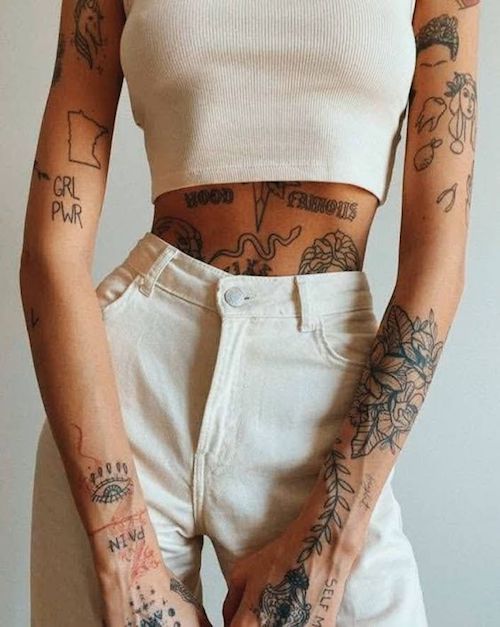
Credit: Editing Trends/Pinterest
Surrealism Tattoo Style
Consider the Surrealism tattoo style to be the brainchild of Illustrative and Realism tattoo styles. Surrealism tattoos are representative of the avant-garde art movement of the same name. These designs depict faces, animals, scenery and everyday objects with a bit of whimsy. Surrealism style tattoos play with distorted figures and shapes, illogical juxtaposition and dream-like symbolism to create a sense of fantasy and hyper-realistic imagery. Most Surrealist tattoos are done with black or grey ink. However, coloured inks are still often used to create Surrealism style tattoos.
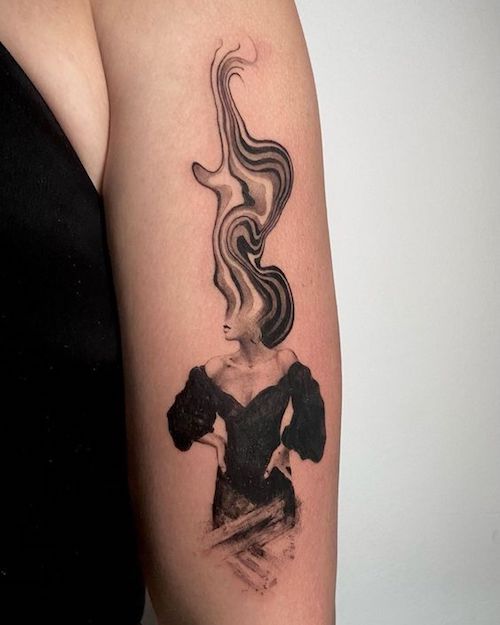
Credit: UTA/Pinterest
Negative Space Tattoo Style
Negative Space tattoos are unique and create an optical illusion that makes your skin the main subject. To create a Negative Space tattoo, the artist will outline the design and strategically fill in the piece with black ink while leaving other areas blank. Negative Space tattoos almost always are done in exclusively black or grey ink. While Negative Space and Blackwork tattoo styles go hand-in-hand, consider negative space tattoos done in Geometric, Watercolour, Minimalist and Realism tattoo styles for a fresh, crisp and clean look that lets your flesh steal the show. Certain tattoo styles, such as Surrealism, Japanese, Traditional or Neo-Traditional tattoos are too abstract to work well in combination with the Negative Space style or tattooing technique.
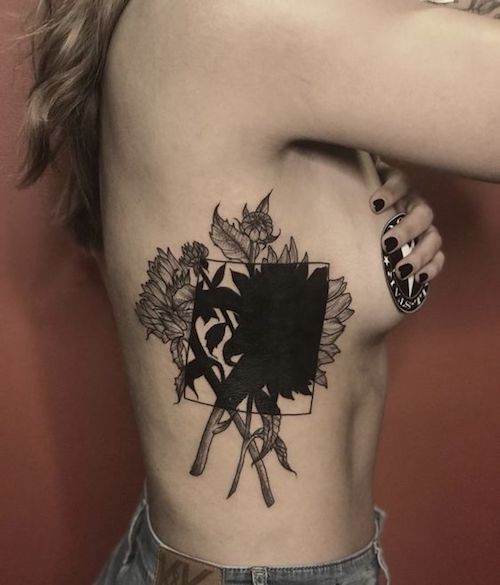
Credit: Cara/Pinterest
Black and Grey Tattoo Style
A softer cousin to blackwork tattoos, the Black and Grey tattoo style uses exclusively black ink with varying degrees of shading throughout the piece. These grey tones are made by combining the black ink with distilled water (a technique called grey washing) to add depth and dimension to the piece. Originating in the 1970s and 1980s, Black and Grey tattoos are still one of the most popular tattoo styles. This monochrome look can be combined with various other tattoo styles including Japanese tattoos, Realism, Illustrative and Dotwork tattoos (more on this tattoo style below). Black and Grey tattoos last longer and are less prone to fading compared to coloured ink tattoos.
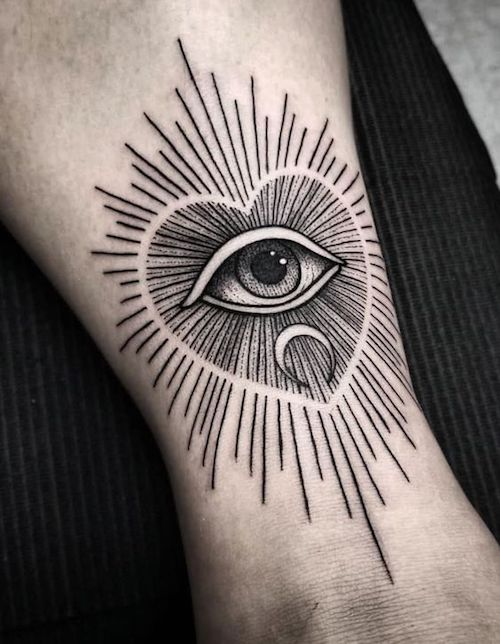
Credit: TheTatt/Pinterest
Dotwork Tattoo Style
As the name suggests, the Dotwork tattoo style involves creating the entire piece with singular tiny dots instead of traditional linework. Most Dotwork tattoos are done in a Black and Grey tattoo style but some can be done in dark blue coloured pigment, too. Dotwork tattoos are very rarely created with vibrantly-coloured ink. While this tattoo style has long held religious or cultural meanings among various Asian and European cultures, Dotwork tattoos are currently trending thanks to their smoother and more artful appearance compared to traditional linework tattoos. Dotwork tattoos last longer but can hurt more to get done than a standard tattoo. They can be inked with a tattoo machine or done using a hand-poked technique. It typically takes longer for an artist to finish a Dotwork tattoo and, therefore, can be more expensive than a conventional tattoo.
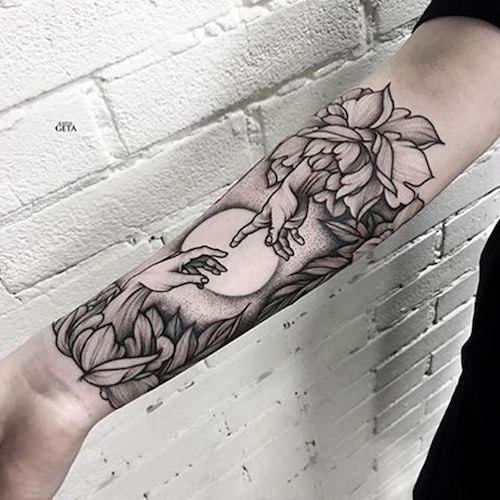
Credit: Bored Art/Pinterest
Line Art Tattoo Style
This tattoo style is known for its minimalist, monochrome and discrete appearance. Line Art tattoos are defined as a style that uses clear lines and a single ink colour to create any design. Most Line Art tattoos are made using one continuous line with plenty of negative space to let the details of the piece “breathe.” The anatomy of a Line Art tattoo involves several curvatures and overlapping details. The needle used can vary in thickness, depending on how bold you want the linework to be. Many Line Art tattoos follow a minimalist tattoo style with geometric or abstract shapes. Common motifs include contorted faces or figures, animals, portraits and floral designs. The simplicity of this tattoo style means that Line Art tattoos can be done in a shorter session and will likely be less painful to get than a traditional tattoo.
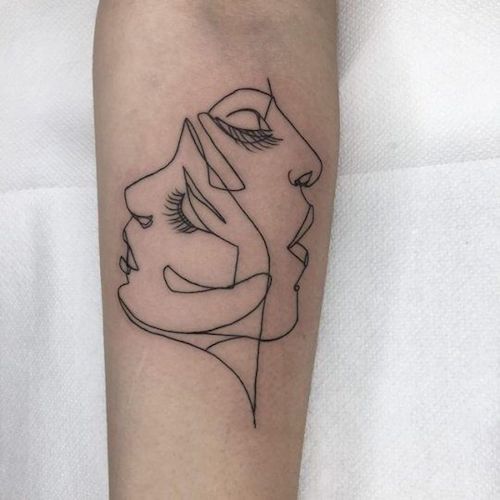
Credit: Bryony Brown/Pinterest
Lettering & Script Tattoo Style
The Lettering and Script tattoo style encompasses any word and phrase tattoos - either done alone or in combination with images to complete the piece. Script tattoos are done in cursive while other lettering styles can be inked in a variety of typefaces, from block lettering to bubble letter font and more. Word and Phrase tattoos can be small, large, placed vertically, horizontally, diagonally and everything in between.
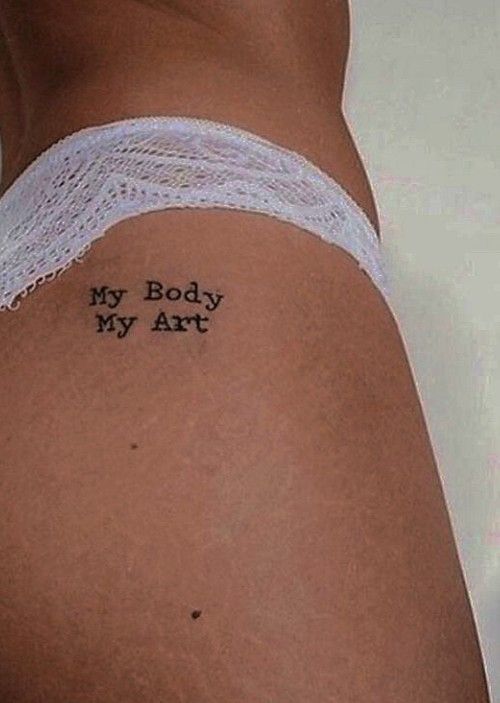
Credit: Ninie/Pinterest
Tattoo Preparation & After-Care Resources:
Your Tattoo Pain Guide: Least To Most Painful Placements, Ranked
Tattoo After-Care: Your Full Guide To The First 48 Hours
What To Expect By Day During The Tattoo After-Care Process
Tattoo Healing Process: Do's and Don'ts For Tattoo After-Care
